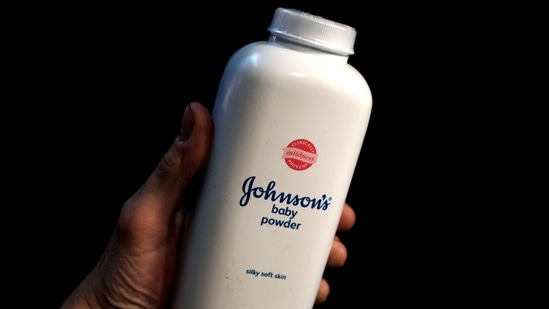Johnson & Johnson ordered to pay $966 million in cancer case: Here is how talcum powder may be linked to cancer
Johnson & Johnson has been directed to pay $966M to a family after a mesothelioma death linked to talc use. Learn how talc and asbestos may raise cancer risk.
A Los Angeles court has directed pharmaceutical giant Johnson & Johnson has been ordered to pay $966 million to the family of Mae Moore, an 88-year-old woman who died in 2021 from mesothelioma, a rare and aggressive form of cancer linked to asbestos exposure. The family filed the lawsuit the same year, claiming that Johnson & Johnson’s talc-based baby powder products contained asbestos fibers that caused her illness. A jury ruled in their favour earlier this week, ordering the company to pay $16 million in compensatory damages and a staggering $950 million in punitive damages. So what is the link between talcum powder and cancer? Let's understand it.

While Johnson & Johnson maintains that its baby powder is safe, asbestos-free, and does not cause cancer, the company discontinued its talc-based baby powder in the US in 2020, shifting instead to a cornstarch-based version. Currently, J&J faces more than 67,000 lawsuits filed by plaintiffs claiming they developed cancer from using the company’s talc products. Most of these cases involve ovarian cancer, but a smaller portion, like the Mae Moore case, focuses on mesothelioma.
What is talcum powder?
Talcum powder is made from talc, a naturally occurring mineral composed mainly of magnesium, silicon, and oxygen. “Due to its silky texture and ability to absorb moisture, it is commonly used in cosmetics such as baby powder, blush, and eye shadow. However, concerns have emerged when talc is mined from areas contaminated with asbestos, a known carcinogen,” Dr Gaurav Jaswal, Consultant Radiation Oncology, TGH OncoLife Cancer Centre, tells Health Shots.
What’s the link between asbestos and talc?
Talc and asbestos are often found near each other underground. As per the American Cancer Society, talc can sometimes become contaminated with asbestos during mining. Asbestos is a group of minerals known to cause cancers, especially in the lungs, when inhaled. If asbestos fibers mix with talc, they can end up in consumer products. That is why manufacturers must carefully source and test their talc to ensure it is asbestos-free. Regular asbestos exposure has been shown to increase cancer risk, which is why even trace contamination in personal care products has raised serious safety concerns.
Talc powder and cancer: What is the link?
The cancer risk largely depends on whether the talc contains asbestos. Dr Jaswal says, “Studies clearly show that inhaling asbestos-contaminated talc increases the risk of developing cancer, especially in the lungs and surrounding tissues.” The World Health Organization’s International Agency for Research on Cancer (IARC) classifies talc containing asbestos as carcinogenic to humans. However, evidence on asbestos-free talc remains less definitive, with ongoing research trying to determine its long-term safety.

Can breathing in talcum powder cause lung cancer?
There is no solid proof that regular use of cosmetic baby powder increases lung cancer risk in consumers. However, people involved in talc mining and processing may face a slightly higher risk due to their prolonged exposure to raw talc, which may naturally contain asbestos or other harmful minerals.
It is difficult for scientists to pinpoint whether this increased risk is due to talc itself or other substances. For most consumers, especially those using purified cosmetic-grade talc, the risk appears to be extremely low.
Can talcum powder increase ovarian cancer risk in women?
According to the American Cancer Society, talcum powder might pose a potential risk if applied regularly to the genital area. The theory suggests that tiny talc particles could travel through the reproductive tract to the ovaries, irritating them may, over time, increase cancer risk.
However, research findings have been mixed. Some studies report a slightly higher risk, while others find no connection at all. A large study of more than 250,000 women between 1976 and 2017 found no significant link between genital talc use and ovarian cancer. Still, researchers continue to explore whether talc could raise risks in specific age groups or types of ovarian cancer.
(Disclaimer: This article is for informational purposes only and not a substitute for professional medical advice.)
Catch your daily dose of Fashion, Taylor Swift, Health, Festivals, Travel, Relationship, Recipe and all the other Latest Lifestyle News on Hindustan Times Website and APPs.
Catch your daily dose of Fashion, Taylor Swift, Health, Festivals, Travel, Relationship, Recipe and all the other Latest Lifestyle News on Hindustan Times Website and APPs.





